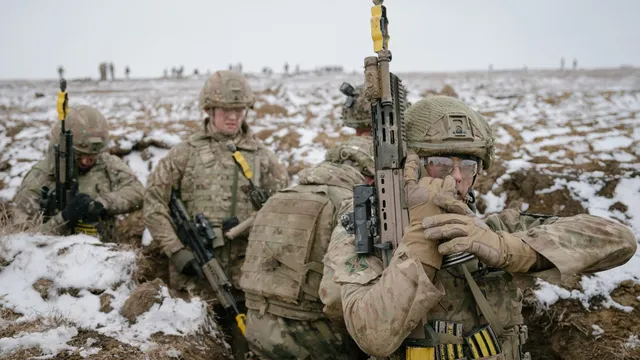
Britain agrees to hike defense spending to 3.5% of GDP amid NATO pressure
2025-06-04 23:01- NATO ministers are meeting to discuss new defense budget targets as global threats increase.
- Britain is expected to commit to a 3.5% GDP defense spending target by 2035 under pressure from the US.
- This spending increase aims to strengthen NATO's collective defense capabilities amidst rising security concerns.
Express your sentiment!
Insights
In June 2025, NATO defense ministers convened to discuss pressing defense budget targets, with a particular focus on increasing military spending among member states. The meeting, scheduled ahead of the annual NATO summit, highlighted concerns regarding defense budgets, especially in light of escalated threats from nations like Russia. Britain, currently the third highest spender in NATO, is anticipated to agree to a spending target that would see its defense budget increase to 3.5% of GDP by 2035. This move is largely in response to pressure from the United States, particularly from President Donald Trump, who has been vocal about the need for European countries to assume greater financial responsibility for their defense. The UK government has been grappling with how to fund this increase, implying potential tax rises may be necessary to meet these commitments. Observers noted that the UK's plans to boost defense are part of broader initiatives to enhance NATO's military readiness, particularly as security threats evolve. Amidst this backdrop, key officials in the UK have cautioned that without substantial funding increases, defense capabilities may be jeopardized, potentially leaving the country vulnerable to future threats. The financial commitments are aimed at reassuring both domestic and international stakeholders that Britain remains committed to NATO and regional security. The discussions at NATO also align with proposals from other European nations seeking to boost defense budgets, further emphasizing a collective approach to security in the face of external threats.
Contexts
The impact of U.S. pressure on NATO spending has become a crucial topic in understanding the alliance's dynamics and the geopolitical landscape in recent years. Following the end of the Cold War, NATO's budgetary priorities have evolved, with a notable shift towards increasing defense expenditure among member nations in response to various global threats, particularly from Russia's aggressive posturing in Eastern Europe. The United States has historically contributed a significant percentage of NATO's overall budget, and in recent years, particularly during the administration of President Trump, there has been heightened pressure from the U.S. government for European allies to meet the NATO guideline of spending at least 2% of their GDP on defense. This pressure has led to debates about burden-sharing within the alliance and the implications for collective security measures in the face of emerging threats. As NATO members respond to U.S. pressure, there is a noticeable trend toward increased defense spending across Europe. Countries like Poland, the Baltic States, and Romania have made substantial investments in their military capabilities, reflecting a recognition of regional security concerns and the need to bolster their defense posture. Germany, which had historically been criticized for its defense spending, has also begun to adjust its spending habits, aiming to reach the 2% threshold by 2024. This shift signifies a potential transformation in NATO's overall military readiness and deterrence capabilities, fostering a more robust collective defense framework that is essential for addressing modern threats. However, the implications of U.S. pressure on NATO spending go beyond mere financial contributions. It raises fundamental questions about the future of transatlantic relations and the strategic vision of NATO. While increased spending enhances military readiness, there are concerns among some NATO members about becoming overly reliant on U.S. leadership and the possibility of diverging national security interests within the alliance. The varying levels of commitment and capability among member nations can lead to asymmetries in the alliance's strategic posture and operational coherence. Such dynamics require careful management to ensure that NATO remains unified in its mission while acknowledging the diverse security environments faced by its members. In conclusion, U.S. pressure for increased NATO spending has significant implications for both individual member states and the alliance as a whole. While it encourages nations to invest in their defense capabilities, fostering a stronger collective deterrence, it also poses challenges related to strategic cohesion and varying national interests. As NATO navigates these complexities, the continued emphasis on shared security responsibilities will be pivotal in maintaining its relevance and effectiveness in an increasingly unpredictable global landscape.